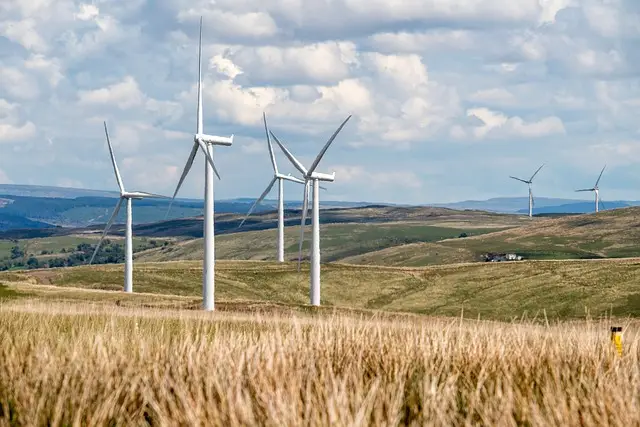Wind turbines are often seen as a green and sustainable solution for energy production. However, like any industrial product, they have their drawbacks, particularly concerning the use of per- and polyfluoroalkyl substances, commonly known as PFAS. These chemicals, valued for their hydrophobic and resistant properties, raise environmental concerns, especially during the installation and recycling of wind turbines.
Why Are PFAS Used in Wind Turbines?
PFAS are used in various parts of wind turbines for their unique properties. These chemicals are extremely resistant to water, oil, and heat, making them ideal for applications under extreme conditions. In wind turbines, PFAS can be found in lubricants, anti-corrosion coatings, cables, and some electronic components. Their use extends the lifespan of equipment, reduces maintenance needs, and improves the operational efficiency of wind turbines.
How Can the Installation and Recycling of Wind Turbines Lead to PFAS Pollution?
While PFAS enhance the performance of wind turbines, their environmental impact is concerning. During installation, leaks of lubricants and coatings containing PFAS can occur, contaminating the surrounding soil and water. Additionally, when wind turbines reach the end of their life, their dismantling and recycling pose pollution risks. Components containing PFAS can release these toxic substances into the environment if proper handling procedures are not strictly followed.
PFAS are known for their persistence in the environment and their ability to accumulate in living organisms, including humans. This bioaccumulation can lead to harmful health effects, such as hormonal disruptions, fertility issues, and an increased risk of certain cancers.
What Are the Current Efforts to Reduce PFAS Pollution?
In response to these concerns, several efforts are being made to reduce the impact of PFAS used in wind turbines. These include:
- Development of PFAS Substitutes: Research is underway to find alternatives to PFAS that offer similar properties without the same environmental harm. Eco-friendly coatings and lubricants are being developed.
- Improved Recycling Processes: Safer and more effective recycling methods are also being developed. This includes techniques to capture and neutralize PFAS during the dismantling of wind turbines. New research is even suggesting that wind turbine blades may become 100% recyclable in the future.
- Strict Regulations: Governments and international organizations are working on implementing stricter regulations regarding the use and disposal of PFAS. This includes transparency requirements from manufacturers and more rigorous waste management protocols.
In conclusion, while PFAS provide undeniable benefits in the operation of wind turbines, their environmental impact should not be underestimated. Efforts to find alternatives and improve recycling practices are crucial to minimize pollution risks. To learn more about PFAS and their impact, I encourage you to explore the sources used for this article.
Sources:
- « Les fluoropolymères accélèrent la transition énergétique », Chemours
- « PFAS: Critical to Renewable Energies », American Chemistry
- « How an EU cehmical Ban could hinder energy transition », Energy Monitor



